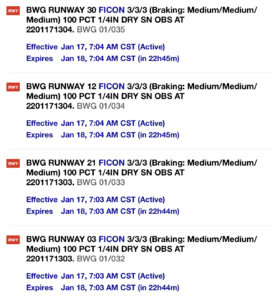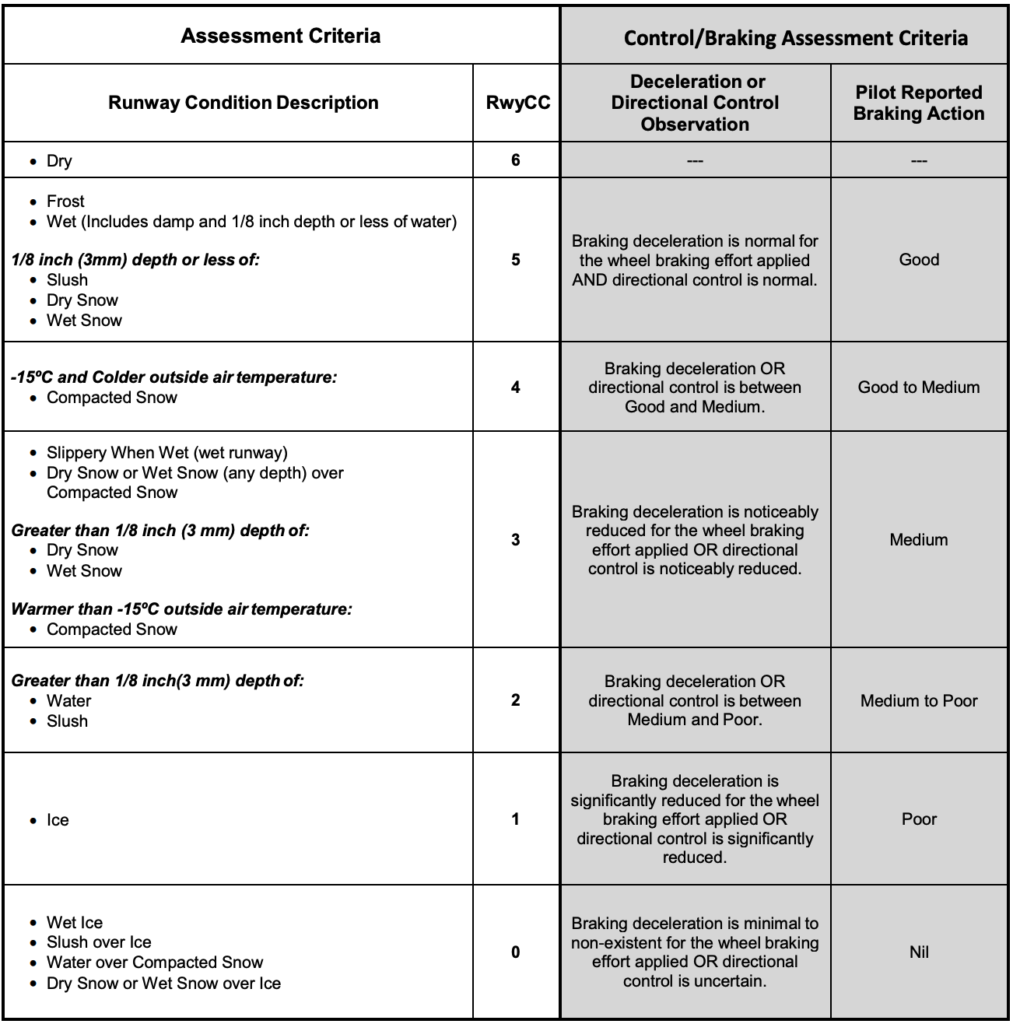Aspiring to inspire past and future pilots

You have been anticipating this flight for weeks. The day before you are going over all of the flight data. Projected winds, weather, the route, arrivals, even your hotel reservations. Your head hits the pillow with the confidence you are prepared for the pending flight in the morning.
The alarm goes off, you drag your feet across the floor as you make your way to the coffee maker. Who didn’t refill the water reservoir? Eventually nice, dark, strong coffee pours from the machine. You gather your equipment, your documents, your keys, and you head to the airport.
You step into the FBO (Fixed Based Operator) and do one last check on Foreflight just in case. You see the familiar red circle around a 1 for your destination airport. Curious, you tap on the NOTAM (Notice to Air Missions), and see the following:
 So now what? Both runways at your destination have medium braking due to one hundred percent 1/4″ dry snow. What is the 3/3/3 telling you? Does it mean that the braking ability of your aircraft will be diminished by seventy percent? Why are there three numbers? Why is ‘medium’ repeated?
So now what? Both runways at your destination have medium braking due to one hundred percent 1/4″ dry snow. What is the 3/3/3 telling you? Does it mean that the braking ability of your aircraft will be diminished by seventy percent? Why are there three numbers? Why is ‘medium’ repeated?
If it helps any, the report listed to the right was listed at the same time the image above was taken. You can clearly see snow on the runway. Would the fact that this is light, powdery snow make a difference to an incoming pilot as compared to perhaps packed snow/ice? I think we’ll agree, yes.
Luckily you checked the METAR and saw the report above. Now what? What’s it all mean? I’ll draw from the 2016 Safety Alert for Operator‘s memorandum. The contents of this alert were effective October 1, 2016 addresses a new way to report runway conditions. The FAA is now using RCAM (Runway Condition Assessment Matrix) to create a standard report.This information can also be found in FAR 4-3-9 – Runway Conditions Reports.
I’ll break down each part of the METAR above one at a time.
KBWG (Bowling Green-Warren County Regional Airport), Runway 30.
Why are there three numbers? The FICON (Field Condition) numbers cover three portions of the runway. Each number covers 1/3 of the runway starting at what is normally the predominant approach end. With KBWG’s six thousand foot runway, each two thousand foot section is represented.
The numbers shown relate to the chart included on the RCAM:

Conditions range from six (the best conditions) to zero (the worst conditions.) The conditions stated as a ‘three’ in the FICON METAR include wet, slippery surfaces, dry snow, or wet snow over compacted snow depending on the outside air temperature. Checking the right column will correlate with the braking assessment. With a reported three, braking conditions are listed as medium.
An important note that was a change from prior to 2016 the term ‘nil’ for braking reports will not be used. If a surface has nil braking, the airport should be closed.
One hundred percent of the coverage is one-quarter of an inch of dry snow. This observation was recorded in 2022 on January the 17th at 1304 GMT/UTC.
We are often reminded to check the most recent information prior to departure. These FICON reports could change your mind about completing a trip especially if you are departing from a sunny, dry location.
Fly safe!
Bob